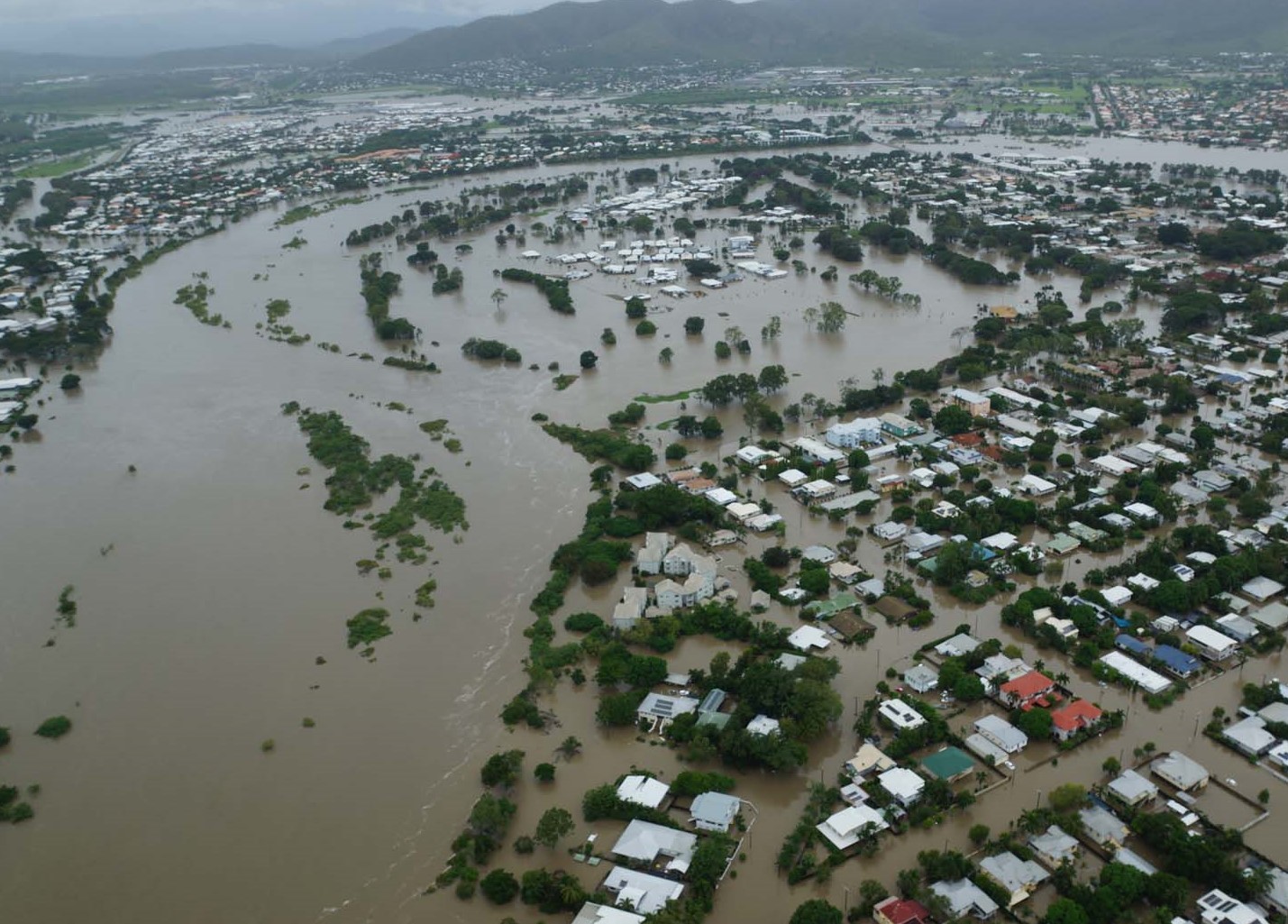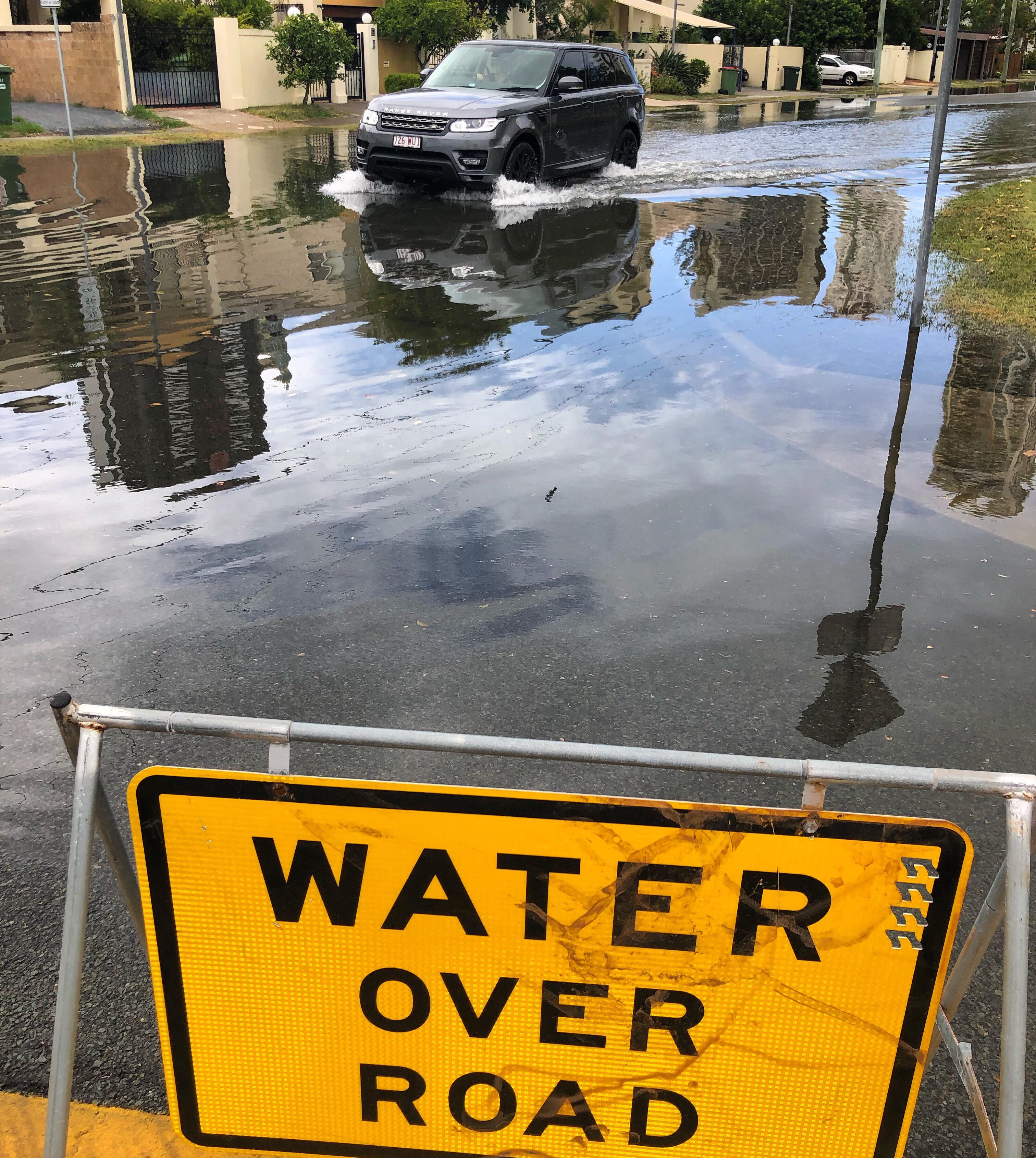Explainer: what is a flood?
04 July 2019
Flooding is among Australia's most deadly natural disasters—but it's also important for the life cycle of many plants and animals, and for agriculture. So what causes floods and how will you know if there's one on the way?
Flooding occurs when water escapes (or is released) from a watercourse (such as a lake, river or creek), or a reservoir, canal or dam.
Floods in Australia are mainly caused by heavy rainfall, although extreme tides, storm surge, snow melt or dam break can also cause flooding. More recently, coastal flooding as a result of sea level rise due to climate change is being considered in planning and land management strategies.
Video: Watch this short video to understand floods.
How rivers flood
Rivers are watercourses formed over thousands of years. They carry excess water from the land to the lowest point possible, often the sea. There are two main contributors to a river flooding in Australia: catchment (natural drainage area) moisture, and rainfall.
The land is a lot like a kitchen sponge – its capacity to absorb water depends how dry it is to begin with. For a river to flow, more rain needs to fall than can be absorbed by the soil. When the soil can hold no more water it's 'saturated', so water will flow freely across the ground and join streams, creeks and eventually, mighty rivers.
Rivers have a maximum capacity to carry water. If this capacity is exceeded, the river will eventually rise higher than its banks and flow out into areas next to the river.

Photo: Townsville floods, February 2019. Credit: Australian Defence Force.
Less common causes of flooding in Australia include:
- Snowmelt – whenever snow melts, the resulting water finds its way into waterways. Rapidly warming conditions can cause snow to melt quickly, releasing large amounts of water that enter downstream rivers, which may cause flooding.
- Dam releases – dams can hold vast amounts of water but all dams have a capacity. The Bureau works closely with dam operators in times of flood to ensure the latest information is available for agencies to manage their assets in a way that minimises impacts on communities downstream.
- Storm surge – a storm surge is a rise above the normal seawater level along a shore resulting from strong onshore winds and/or reduced atmospheric pressure. Storm surges often accompany a tropical cyclone – or an intense low pressure system in non-tropical areas. While coastal flooding is likely during a storm surge, it can sometimes combine with a river flood to produce even more significant flooding.
- King tides – the term 'king tide' is widely used to describe an exceptionally high tide. These tides are a natural and predictable part of the tidal cycle. The time of year they occur varies by location and between years and can have very noticeable effects where the ocean meets the land at beaches, estuaries, harbours, and other coastal locations.
Many Australian rivers transport rainfall long distances across the landscape. While some rivers flood rapidly and discharge their water close to where the rain fell, other longer rivers may not flood for weeks or even months after the rain has fallen. The Murray River, Australia's longest at over 2,500 km, may take months for upstream flood water to reach the river mouth in South Australia. At a shorter timescale, river flood peaks can often be reached some days after the rain has fallen.
Map: The arrows show the general direction of water drainage across Australia and where the water goes when there are floods. Access a more detailed version of this map here.
Flooding – a natural process
While we often associate floods with damage, disaster and loss, flooding is a natural process that brings both positives and negatives.
Coffee-coloured flood water is, for many, a river of gold. For Australia, the second driest continent, flooding provides water to many places that would otherwise be deserts. Bananas grow in Carnarvon (Western Australia), cotton in St George (Queensland), rice in Griffith (New South Wales) and stone fruit in Swan Hill (also in New South Wales), to give a few examples.
In many parts of the world, floodwaters spill out onto massive coastal areas known as river deltas. While only covering half a per cent of the Earth's surface, river deltas host 5 per cent of the global population – around 350 million people. Floodwater carries with it fine sediment, containing valuable nutrients and minerals. Water and sediment means flood plains, deltas and river areas are rich, fertile lands with plenty of water where agriculture thrives, providing income and quality of life for millions.
Floodwaters don't just benefit people either. Floods also fill billabongs and wetlands, replenishing water bodies and contributing to the life cycle of many plants and animals, including those in marine environments.
On the negative side, in Australia flooding is the second most deadly natural disaster after heatwaves. People have been drawn to living on flood plains and rivers for agricultural, lifestyle and nature benefits. However this can make communities susceptible to flooding.
Some people don't perceive floodwaters to be as dangerous as raging fires, or the howling gales of a tropical cyclone – yet flooding is a serious threat. Over half of flood fatalities result from people entering floodwaters, usually in a vehicle. Sadly, most flood injuries and fatalities are preventable. A small car weighing about 1 tonne can be moved by floodwater which is only 15 cm deep at a flow rate of 1 metre/second. In 60 cm of floodwater a small car will completely float away. This is because of the car's buoyancy from airtight doors and inflated tyres. To prepare and stay safe, read 'What to do before, during and after a flood'.
Australia depends heavily on road and rail networks, which are frequently disrupted by flooding. Major flooding may inundate homes and cause damage throughout communities. Often recovery is costly and prolonged. Flooding costs the Australian economy an average of $400–500 million per year.

Photo: Coastal inundation, Budds Beach, Gold Coast, Qld. Credit: Mandy Southam.
How are floods predicted?
Long before rainfall is recorded on the ground it is the job of specially trained hydrologists to assess the potential for flooding and forecast river height at certain locations at a given time. Hydrologists use 3 main inputs for assessing flood potential:
- forecast rainfall from our meteorologists
- observations from our vast flood monitoring network. Rainfall and river height data is collected from around 3500 stations across Australia owned and operated by the Bureau and partner organisations, including water management agencies and local councils
- computer modelling from the Australian Water Outlook. This model is run across the entire country every day and provides an early assessment of how wet or dry soils are.
Once a flood-producing rainfall event is identified, hydrologists use their deep understanding of the catchment and specialised hydrological computer models to simulate how the river will respond. They then communicate day and night with emergency services to ensure the latest information is available to the community.
How will I know if a flood is coming?
While all levels of government work together to prepare communities for flooding, warnings and advice about riverine flood are produced by the Bureau. Current flood watches and warnings can be found on our warnings page or the BOM Weather app.
Flood Watches and Warnings generally cover rivers that take more than 6 hours to respond to rainfall. Flood Watches provide early advice of a developing situation that may lead to flooding – it's not a warning of imminent flooding. Flood Warnings are issued when floods are already occurring or are expected to occur.
More information
Understanding flood classifications (short video)




Comment. Tell us what you think of this article.
Share. Tell others.